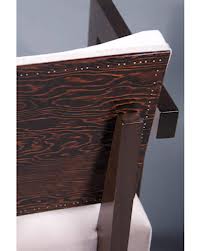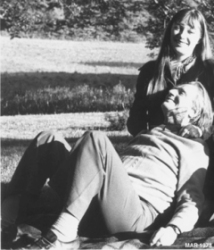
André Sornay was one of the most innovative designers of the 20th Century, but because he lived and worked in Lyon, France rather than Paris, he is not as well known as contemporaries such as Le Corbusier and Prouve. Sornay studied art at the Ecole des Beaux Arts de Lyon, but quit school at the age of 17 when his father's death made him head of the family's furniture-manufacturing company. Highly influenced by the Bauhaus and De Stilj movements and uninterested in the overly-elaborate styles of Beaux-Artes and Art Nouveau, Sornay began his career as Art Deco peaked, and as new materials and manufacturing processes were rapidly changing the design world. He soon transformed the company from a copier of traditional forms to a manufacturer of boldly modern designs. Very much aligned with Unione des Artistes Moderne philosophy and values, Sornay also sought a democratization of design. His use of pure, simple geometry of line and balanced proportions rendered in the most modern materials by the most modern processes, set him apart and ahead of most of his fellow designers, and certainly most (if not all) of his potential market. Sornay showed his designs at the landmark 1925 Exposition des Arts Decoratif but was overlooked by critics and patrons still enamored by Dufresne, Jourdain, and Ruhlmann. Undeterred, by 1929 he had developed the "cloutage" assembly system, which accomplished the attachment of veneer panels to furniture frames by the yse of small brass nails or studs., and led to the production of "cloutie", small lines of generally affordable furniture. These small, visible lines of brass nailheads at the edges of the panels were trademarked by Sornay in 1932, as they had in fact become the most recognizable feature of his designs.More patents were assigned to Sornay after WW2, notably for the "Sornay rod" assembly system in 1953. By then, he had begun to receive recognition for his unique designs, in particular the multi-functional versatility of many pieces ("meuble a system") and innovations such as integrated lighting elements. One leading example of Sornay's liking for new materials was his use of "Oregon pine", a sotwood from the northwest USA that exhibited wide, exotic graining in mainly orange tones. Sornay brushed, sanded, ebonized, and then re-sanded the wood's surface to show exotic black-on-orange tones. Other innovations included the use of Duco lacquers developed by the Dupont Company for the US automobile industry, and the design and machining of aluminum drawer pulls, mounts, and other parts. By the late 1950s, Sornay had successfully refined the engineering and production of modular furniture for commercial use that the company shifted to large-scale manufacture for public works contracts and projects, and Sornay eventually passed control to the next generation. A peer of Corbusier, Perriand, Prouve and Chareau, a gifted illustrator and accomplished interior designer as well as a designer, Sornay was a practical visionary whose singular design sensibility combined with a natural facility for developing new production techniques marks him as an uniquely important figure in 20th century design.




.png)